Explore Salalah - Oman Travel, Asia
Salalah, the capital of Oman's Dhofar region, is a rising star in the Middle Eastern tourism industry. Nestled between the Arabian Sea and the Dhofar Mountains, this seaside paradise provides an unforgettable travel experience. This city is a destination for nature lovers, history enthusiasts, and adventure seekers alike. Whether you’re trekking through misty mountains, relaxing on pristine beaches, or discovering ancient trade routes, Salalah has something for everyone. With its tropical climate, rich cultural heritage, and stunning scenery, it’s no wonder this city is becoming a must-see destination for travelers.
Population: Approximately 440,000 in 2022.
Economy: Salalah's economy thrives on tourism, agriculture, and the export of frankincense. The city also benefits from its port, supporting trade and logistics, along with a growing industrial sector.
Landmarks: Famous for the Al Mughsail Beach, Wadi Darbat, and the Frankincense Land Museum.
Oman
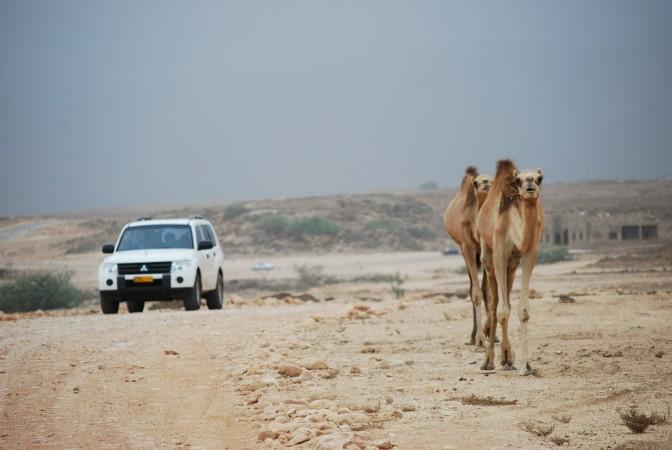
Overview of Salalah
History & Cultural Influence
Salalah, known historically as the heart of the frankincense trade, was formerly a stop on the old Incense Route. This trade connected the Arabian Peninsula with the Mediterranean, East Africa, and India, making it an essential hub for commerce and cultural exchange. The ancient ruins here tell the story of a civilization that thrived due to the valuable trade in frankincense, a resin once more valuable than gold. Furthermore, the city’s culture is influenced by a mix of Bedouin traditions, East African, and Indian cultures due to Oman’s maritime past. This diversity is reflected in the architecture, food, and even the language, creating a rich and colorful cultural tapestry that tourists can experience firsthand.
Interaction with the Locals
Salalah, the capital of the Dhofar region in Oman with the residents are a mix of ethnic Omani, with significant influences from East African, Indian, and Bedouin cultures due to its historical position as a trade hub. The citizens of Salalah are known for their warm hospitality and pride in their rich cultural heritage. Arabic is the primary language, but many locals also speak English, particularly in tourist areas. The local community is deeply connected to traditional values, while being welcoming and open to visitors.
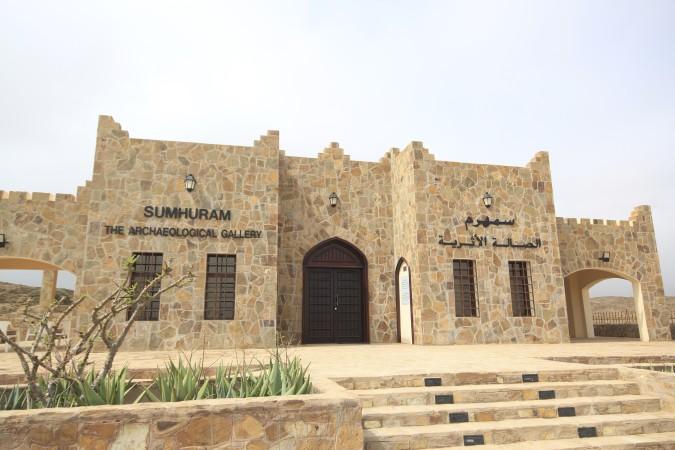
Frankincense Land Museum - © Wikimedia
Top Attractions in Salalah
Salalah is home to some of the most stunning natural and cultural attractions in Oman. Whether you’re a history enthusiast, beach lover, or nature explorer, this city has a wide variety of sights that will leave you in awe.
Al Mughsail Beach
Known for its long stretch of white sand and turquoise waters, Al Mughsail Beach is a favorite among tourists and locals alike. The beach is famous for its dramatic blowholes, where seawater shoots up through limestone rocks, creating spectacular natural fountains. This is the ideal place to unwind, swim, or have a picnic with breathtaking ocean views.
Wadi Darbat
For nature lovers, Wadi Darbat is a must-visit, especially during the Khareef season when the area transforms into a lush, green paradise. Waterfalls cascade from the hills, making the valley a popular destination for picnicking, hiking, and boating. The stunning views of the Dhofar Mountains and waterfalls make it one of the most picturesque locations in Oman.
Frankincense Land Museum
The Frankincense Land Museum, located within the Al-Baleed Archaeological Park, is a must-see for historians. This museum provides insights into Salalah’s rich history as the center of the frankincense trade, showcasing artifacts from ancient civilizations that once thrived in the region. Visitors can explore the museum to learn about the significance of frankincense and Oman’s maritime heritage.
Sultan Qaboos Mosque
A trip to Salalah would be incomplete without visiting the Sultan Qaboos Mosque. This architectural marvel is one of the largest and most beautiful mosques in Oman. With its impressive white marble facade and intricate Islamic designs, it offers a peaceful retreat and a glimpse into Oman’s religious and architectural heritage.
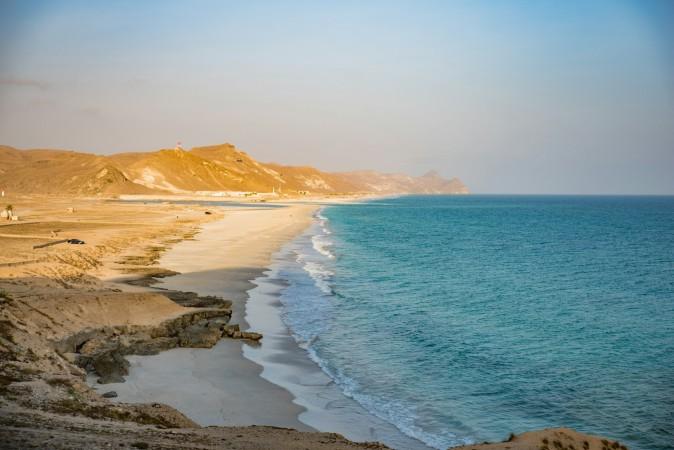
Al Mughsail Beach - © Monika Guzikowska
Must-Try Dishes in Salalah
Salalah local cuisine is a delightful reflection of its cultural diversity, influenced by Arabian, Indian, and East African flavors. Visitors can savor a wide variety of dishes, each offering a unique taste of Omani cuisine.
- Majboos: Majboos, also known as Kabsa, is a fragrant rice dish cooked with spices like saffron, cardamom, and cloves. It is typically served with lamb, chicken, or fish, and garnished with nuts and raisins. This hearty meal is a staple in Omani households and is popular during family gatherings and special occasions.
- Harees: Harees is a traditional Omani dish made with wheat and meat, slow-cooked to a creamy consistency. Often enjoyed during the holy month of Ramadan or on special occasions, this dish has a comforting, porridge-like texture that is both filling and flavorful. It's typically served with ghee and sometimes topped with cinnamon or sugar for a subtle sweetness.
- Madrouba: Madrouba is another traditional Omani comfort food, often prepared with rice, chicken, and a variety of spices. The ingredients are mashed together, giving the dish a soft, creamy texture. It’s commonly served with ghee and is enjoyed during both daily meals and festive occasions.
- Kabsa: Kabsa, a rice-based dish spiced with cloves, cardamom, and cinnamon, is often prepared with lamb or chicken. The slow-cooked meat is tender and flavorful, making this dish a popular choice for celebratory feasts. Kabsa is similar to Majboos but varies in its preparation and spice mix, offering a distinctive taste.
- Sakhana: Sakhana is a sweet, thick soup made with dates, wheat, and molasses. It’s a traditional dish often consumed during Ramadan for its nutritious and energy-boosting qualities. Sakhana offers a rich, warm flavor and is often served as a dessert or a light meal during the colder months.
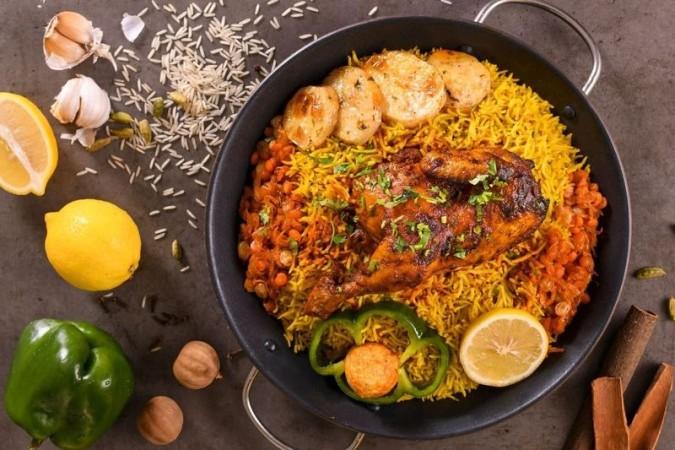
Majboos - © The Captain Chef
Festivals & Local Celebrations
Salalah is a city that comes alive with festivals and celebrations, particularly during the Khareef season, when both locals and visitors gather to enjoy the cool, misty weather and vibrant events. These festivals offer a unique opportunity to experience the rich traditions and joyful spirit of Salalah’s people.
Salalah Khareef Festival
The Salalah Khareef Festival, held from June to September, celebrates the monsoon season that transforms the city into a lush, green oasis. It includes cultural performances, traditional music, and local crafts and is a great time when families and tourists come together to enjoy everything from food stalls to live entertainment, showcasing the best of Omani culture.
Eid Celebrations
As a predominantly Muslim city, Salalah celebrates Eid al-Fitr and Eid al-Adha with great enthusiasm. These festivals are distinguished by unique prayers, feasts, and social gatherings. Visitors can experience traditional Omani hospitality as families come together to celebrate these significant religious holidays.
Camel Racing Events
Camel racing is a popular sport in Salalah, particularly during festivals. Visitors can witness the excitement of these events, which highlight Oman’s deep connection to its Bedouin heritage. Camel races often take place during Khareef and other local celebrations, offering a unique glimpse into traditional Omani life.
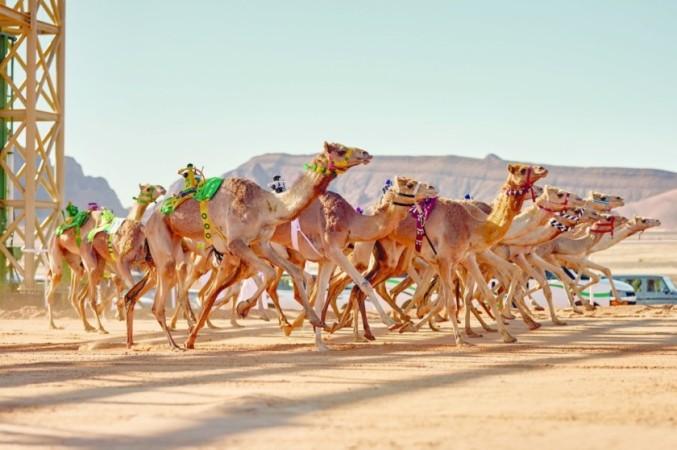
Camel Racing Events - © Oman Observer
What to Do in Salalah
- Hiking and Trekking in Salalah: Salalah’s diverse landscape is perfect for hiking and trekking. The Dhofar Mountains offer stunning views and cool temperatures, especially during the Khareef season. Trails around Wadi Darbat and Jebel Samhan provide scenic routes through lush valleys, waterfalls, and high plateaus, making them popular spots for both amateur and experienced hikers.
- Snorkeling in Salalah: Salalah is a beach lover’s paradise for its long coastline with the Al Mughsail Beach, one of the most famous, known for its golden sands, crystal-clear waters, and spectacular blowholes. Visitors can enjoy swimming, sunbathing, snorkeling or a peaceful walk along the shore.
- Desert Safaris: For a truly Omani experience, take a desert safari into the Empty Quarter (Rub' al Khali), the largest continuous sand desert in the world. Experience the vast, golden dunes, ride camels, or enjoy a traditional Bedouin meal under the stars. This adventure offers an unforgettable look into the heart of Oman’s desert culture.
Shopping in Salalah
- Al Haffa Souq: One of the oldest and most famous markets in Salalah, Al Haffa Souq is renowned for its frankincense, perfumes, and traditional Omani handicrafts. This bustling marketplace is a great place to buy souvenirs like silver jewelry, handcrafted pottery, and textiles.
- Salalah Gardens Mall: For a more modern shopping experience, Salalah Gardens Mall offers a wide variety of international and local brands. It’s the perfect spot for tourists looking for convenience, with restaurants, entertainment options, and shops all under one roof.
- Local Handicraft Stores: Visitors can buy Salalah's most well-known frankincense resin, incense burners, and perfumes that capture the essence of the region. Local artisans also produce beautiful silver jewelry, textiles, and pottery, reflecting the craftsmanship passed down through generations.
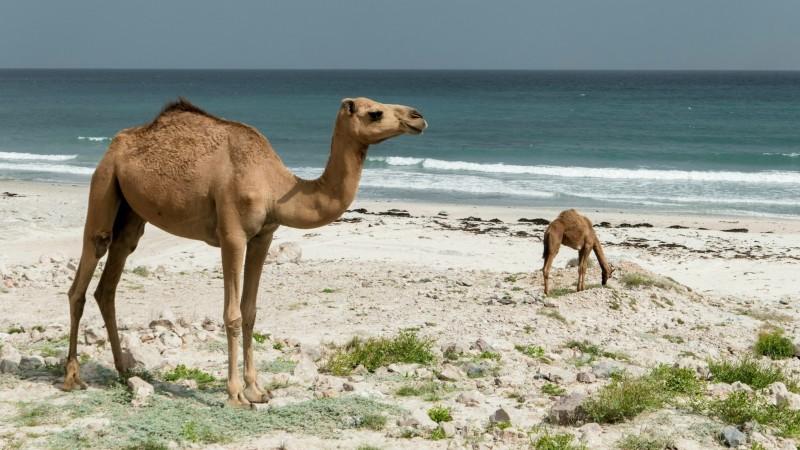
Relax at Salalah beach... with camels - © Arisa S.
Weather in Salalah: Best Time to Visit
Salalah’s climate sets it apart from other destinations in the Arabian Peninsula, offering a unique experience throughout the year. The city has a tropical climate, mainly affected by the Indian Ocean, with two distinct seasons: Khareef (monsoon) and dry season.
Khareef Season in Salalah
The Khareef season is what makes Salalah truly special. From June to September, monsoon winds from the Indian Ocean bring cool, misty weather, transforming the region into a lush, green oasis. Temperatures during this time range from 22°C to 29°C (72°F to 84°F), offering a cool respite from the intense heat typical in the rest of Oman and the Middle East. This season is ideal for those seeking to enjoy Salalah's unique landscapes, including waterfalls, green valleys, and mist-covered mountains.
Dry Season in Salalah
The dry season lasts from October to May, with temperatures ranging from 25°C to 35°C (77°F to 95°F). During this time, the weather is warm and sunny, perfect for outdoor activities such as beach trips, hiking, and exploring the desert. This season is ideal for visitors looking to enjoy Salalah's beautiful coastline, cultural sites, and pleasant winter temperatures.
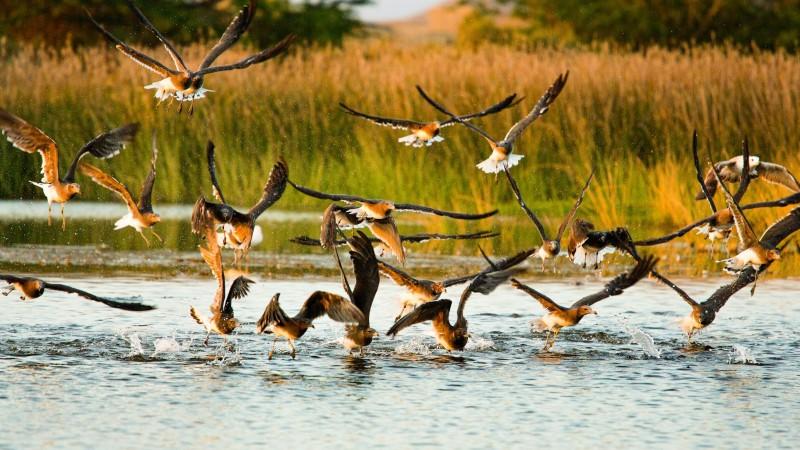
Hiking in good weather and witness the wildlife beauty of Salalah - © Tanja Cotoaga
Essential Travel Information
Getting Around Salalah
- Taxis: Taxis are a popular and convenient way to get around Salalah. Most taxis don’t use meters, so it’s important to agree on a price before starting your journey. Taxis can be hailed on the street or arranged through hotels. For tourists, this is often the easiest method of transportation.
- Rental Cars: Renting a car is highly recommended if you plan to explore beyond the city limits. With this option you will have the flexibility to visit more remote locations like Wadi Darbat or the Empty Quarter at your own pace.
- Public Buses: Salalah has a basic public bus system, but it’s limited in coverage and frequency. Buses are an affordable option for getting around the city, though they may not always be the most convenient for tourists who want to explore multiple attractions in one day.
- Cycling and Walking: For short distances, walking or cycling can be a pleasant way to explore central Salalah. The city’s flat terrain and scenic coastal roads make it ideal for leisurely bike rides. Some hotels even offer bike rentals to guests.
ATM & Banking Services
Salalah offers modern and convenient banking services for tourists, with ATMs widely available in shopping malls, hotels, and key tourist areas. Most ATMs accept international cards such as Visa and Mastercard, making it easy to withdraw local currency, the Omani Rial. While major establishments accept credit cards, it's advisable to carry some cash for smaller markets, local shops, or taxi fares. Currency exchange services are available at the airport, hotels, and various locations throughout the city, ensuring visitors have easy access to financial services during their stay.
Where to Stay in Salalah
- Luxury Resorts: For those seeking a high-end experience, Salalah boasts several luxury resorts offering private beaches, fine dining, and premium amenities. These resorts are ideal for travelers looking to relax in style, with services like spa treatments, infinity pools, and breathtaking views of the Arabian Sea.
- Mid-range Hotels: Mid-range hotels in Salalah provide a comfortable stay with modern amenities at more affordable prices. Many of these hotels are conveniently located near the city’s main attractions, such as beaches and historical sites, offering a perfect balance of comfort and value for travelers who want convenience without the premium price.
- Budget Stays: Travelers on a tighter budget will find a number of guesthouses and affordable motels offering clean, simple accommodations. These options are ideal for those who prioritize exploring the city over luxury and are seeking good value for their stay.
Articles for you

Explore Yala National Park - Sri Lanka Travel, Asia
Tucked away in Sri Lanka’s southeastern corner, Yala National Park is where wild nature meets deep tradition. Known worldwide for its leopard population, the park is also home to elephants, sloth bears, crocodiles, and hundreds of bird species. Beyond wildlife, Yala opens doors to a cultural landscape dotted with ancient temples, Buddhist ruins, and coastal villages. For travelers seeking more than just a safari, Yala offers a chance to explore eco-tourism, local communities, and sacred heritage sites.
Population: The Yala National Park area doesn’t have a human population.
Economy: The economy around Yala National Park thrives on a blend of eco-tourism, agriculture, and local services. Safari tours, eco-lodges, and cultural experiences drive steady income for nearby towns like Tissamaharama and Kataragama, supporting thousands of families.
Landmarks: Famous for Block I of Yala and wildlife encounters, including elephants, sloth bears, crocodiles, and exotic bird species.

Explore Galle - Sri Lanka Travel, Asia
Nestled on Sri Lanka’s southern coastline, Galle is a vibrant city where history meets the sea. Its cobbled streets, colonial architecture, and serene beaches make it a must-visit destination for travelers seeking a blend of culture, adventure, and relaxation. A UNESCO World Heritage site, Galle captivates visitors with its Dutch Fort, bustling markets, and friendly locals. Whether you’re exploring the ramparts at sunset or savoring fresh seafood by the shore, Galle promises an unforgettable journey into Sri Lanka’s heritage.
Population: Approximately 113,000 in 2023.
Economy: Galle’s economy thrives on tourism, trade, and fisheries. The city’s historic fort, colonial architecture, and coastal charm draw thousands of international visitors each year, making tourism its main economic driver. Fishing remains vital for local livelihoods, supplying fresh seafood across the region.
Landmarks: Famous for the Galle Fort, Dutch Reformed Church & Maritime Museum, and Unawatuna Beach.

Explore Bentota - Sri Lanka Travel, Asia
Nestled along Sri Lanka’s southwestern coast, Bentota is a tropical paradise that blends golden beaches, vibrant culture, and thrilling adventures. Famous for its calm waters, luxury resorts, and scenic river estuary, Bentota has become a top destination for travelers seeking both relaxation and authentic experiences. From serene beach walks at sunrise to adrenaline-pumping water sports, this coastal town offers a perfect balance of leisure and exploration. With its proximity to Colombo and Galle, Bentota is easy to reach, making it an ideal stop for both short escapes and extended holidays.
Population: Approximately 37,000 in 2023.
Economy: Bentota’s economy thrives mainly on tourism, which drives local businesses such as hotels, restaurants, and wellness retreats. The town also benefits from fishing, coconut cultivation, and handicrafts like wood carving and batik textiles. Many residents rely on the growing demand for water sports and Ayurvedic treatments, making tourism the backbone of both income and employment in the area.
Landmarks: Famous for Bentota Beach, Bentota River Safari, and Kande Vihara Temple.

Explore Mirissa - Sri Lanka Travel, Asia
Mirissa is a charming coastal town on Sri Lanka’s southern shoreline. Known for its golden beaches, turquoise waters, and vibrant marine life, it has become a must-visit stop for travelers exploring the island. Many come for whale watching, surfing, and sunset views at Coconut Tree Hill, but Mirissa offers much more than postcard beauty. The fishing boats you see anchored by the bay carry generations of stories. Local traditions, delicious cuisine, and a laid-back rhythm of life shape every visitor’s experience.
Population: Approximately 4,700 in 2023.
Economy: Mirissa’s economy is largely shaped by its coastal location. Fishing has long been the backbone of local livelihoods, with generations relying on the Indian Ocean for income. In recent decades, tourism has become the main driver of growth, thanks to whale watching, surfing, and beachside hospitality.
Landmarks: Famous for Mirissa Beach, Coconut Tree Hill, and Parrot Rock Bridge.

Explore Nuwara Eliya - Sri Lanka Travel, Asia
Tucked away in the Central Highlands of Sri Lanka, Nuwara Eliya is often called “Little England”. With its rolling tea plantations, cool misty mornings, and colonial charm, this mountain town feels like a step into another world. Travelers come here to breathe fresh air, walk through flower gardens, sip the finest Ceylon Tea, and enjoy a pace of life far from the island’s busy cities. Whether you’re drawn by scenic landscapes, heritage architecture, or the warmth of its people, Nuwara Eliya is a destination that blends nature, culture, and history in perfect harmony.
Population: Approximately 781,000 in 2023.
Economy: Nuwara Eliya’s economy thrives mainly on tea production, as it sits in the heart of Sri Lanka’s central highlands, famous worldwide for Ceylon Tea. The city also benefits from a growing tourism industry, attracting visitors with its colonial charm, cool climate, and scenic landscapes.
Landmarks: Famous for Gregory Lake, Hakgala Botanical Garden, and Victoria Park.

Explore Sukau - Malaysia Travel, Asia
Nestled on the banks of the Kinabatangan River in Sabah, Malaysian Borneo, Sukau is a destination where wildlife, culture, and conservation come together. Known as one of Asia’s top spots for river safaris and eco-tourism, this quiet village offers a front-row seat to encounters with Bornean orangutans, pygmy elephants, proboscis monkeys, and exotic birdlife.
Population: Approximately 1,400 in 2019.
Economy: Sukau’s economy is shaped by its riverine location and natural resources. Traditionally, the Orang Sungai community relied on fishing, small-scale farming, and forest gathering for their livelihood. Today, the village has shifted toward eco-tourism, with river cruises, jungle trekking, and homestays providing income.
Landmarks: Famous for the Kinabatangan River cruises, Gomantong Caves, and Ox-bow lakes and wetlands.
